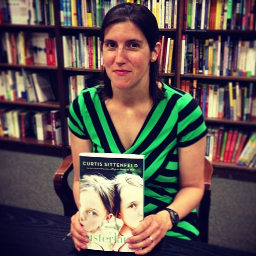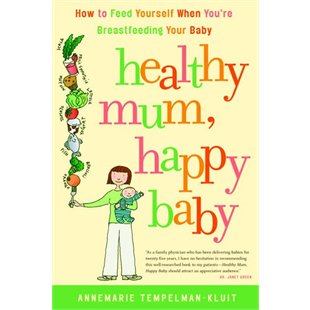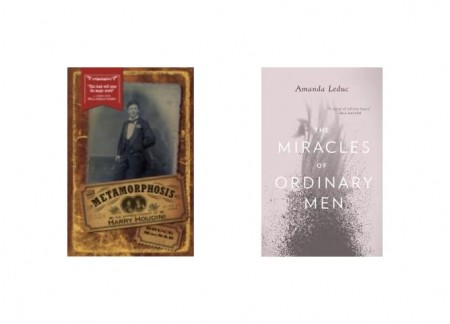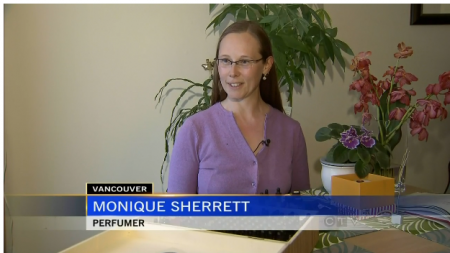Sisterland: A great novel about the ying-yang of twins with ESP and the choices 1 makes to try to hide it while the other embraces it.
I was lucky enough to participate in the first National Post Afterword Reading Society where 20 readers reviewed Curtis Sittenfeld’s novel Sisterland .
.

Curtis Sittenfeld is the New York Times bestselling author of American Wife and Prep, neither of which I’ve read so I was keen to get into Sisterland. I wouldn’t normally go for a book about twins and ESP because although I like magical realism and fantasy, I find things psychic abilities a little creepy. My imagination is too susceptible and maybe that’s why this novel is sort of mesmerizing.
The story is about twins Daisy and Violet who have ESP. Their “senses” help them know things like what a guy likes in a girl and they can sometimes see things like the name of a person who’s kidnapped a little boy. As little girls, the twins have fun playing games guessing at what the other is thinking, which creeps out their mom. As teens, they aren’t popular girls, twins were less common in the ’70-90s, but they do become a little infamous when Daisy takes a chance and tells another girl that she has ESP. The other girl is a popular, rich girl who takes advantage of Daisy to win a boy but then betrays her to the school as a witch.
One of my favourite lines in the book is early on at page 67 in a section of dialogue between a substitute teacher doing roll call, Marisa the mean, popular girl and Daisy.
Quote: She took attendance by calling out our last names, and when she got to Shramm, I raised my hand and said, “Here.”
She looked again at the list. “There are two Shramms. You’re which one?”
“No,” Marisa said immediately. “She’s Witch Two.”
Out of context it can seem a bit slack stick but what I like about that line is that it sums up that caustic humour of teenagers. A less skilled writer would have made Marisa more of a caricature but instead she is craftily constructed.
From then on Daisy masks her senses and Vi embraces them. Daisy even changes her name in college in order to hide from the stories. She starts going by Kate instead, marries a nice sensible boy and has two kids. Violet on the other hand is a lesbian, psychic medium who predicts a massive earthquake and ends up on local, then national, tv broadcasting her predictions and stirring up old tensions between herself and Daisy/Kate.
Kate is of course mortified about the prediction and the publicity, has a run in with old Marisa, who is still chasing boys despite being in her late 30s now, and ends up making a ton of mistakes in her attempts to just be normal.
Between Kate and Violet, I think Vi is my favourite twin. Violet, the first born, who embraces her ESP and rocks the flowy shirts and birkenstocks, really puts the woo in woo-woo. And even though she’s worthy of many eye rolls, there’s something redeeming about her.
At the beginning of the novel I was cheering for Kate but by the end Vi was the champ. Sittenfeld’s set up of the dynamic between the twins and the what-if concerns about Vi’s earthquake prediction made Sisterland into a fun, summer read. The bit of a mystery kept me cruising through the book.
 If you like Audrey Niffenegger’s Her Fearful Symmetry, then you’ll like Sisterland. Both are about twins who are intensely attached to each other, emotionally removed from their parents and who possess some extraordinary abilities. Not to say that if you like a twin book, you’ll like another, but more so because Niffenegger and Sittenfeld are both great writers who turn these plotlines into well-written, page turners.
If you like Audrey Niffenegger’s Her Fearful Symmetry, then you’ll like Sisterland. Both are about twins who are intensely attached to each other, emotionally removed from their parents and who possess some extraordinary abilities. Not to say that if you like a twin book, you’ll like another, but more so because Niffenegger and Sittenfeld are both great writers who turn these plotlines into well-written, page turners.
Follow Curtis Sittenfeld on Twitter
Visit her website
Or buy the book Random House Canada












